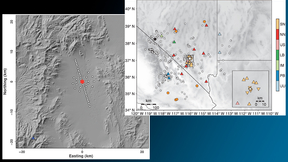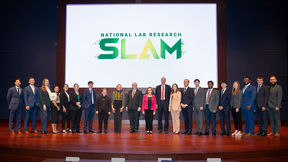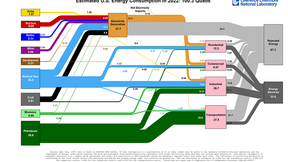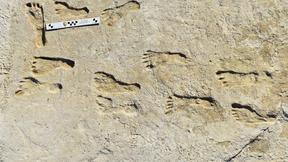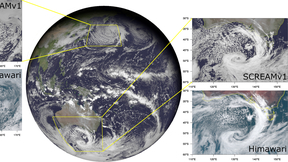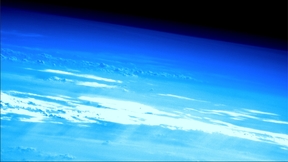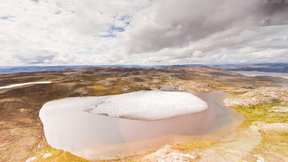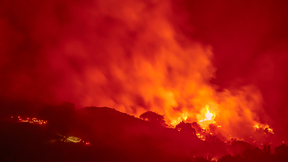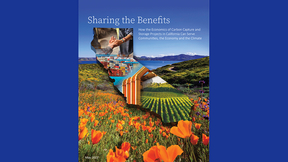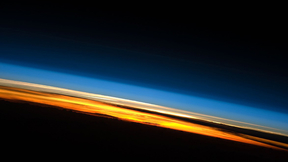Back
In a special issue of the Bulletin of the Seismological Society of America, Lawrence Livermore scientists describe recent work in seismoacoustics, an area of research that uses observations of both seismic and low-frequency acoustic waves (infrasound) to differentiate between earthquakes and other shallow underground or surface sources like explosions and volcanoes. Both…
Lawrence Livermore National Laboratory (LLNL) has received $1 million to explore technologies that stimulate hydrogen production from mineral deposits found in the subsurface, including developing our understanding of hydrogen-producing geochemical reactions and how to enhance or control the rate of hydrogen production. The use of hydrogen fuel to offset fossil fuel…
Lawrence Livermore National Laboratory's (LLNL) popular lecture series, “Science on Saturday,” returns Feb. 3 and runs through Feb. 24. The series offers four different lectures with the theme, “Magic of Materials.” Each lecture is presented by leading LLNL researchers who are joined by high-school science teachers. Below is the schedule of lectures, which can also be…
Lawrence Livermore National Laboratory (LLNL) researchers, along with scientists from more than a dozen institutions, have completed a first-of-its-kind high-resolution assessment of carbon dioxide (CO2) removal (CDR) in the United States. The report, “Roads to Removal: Options for Carbon Dioxide Removal in the United States,” charts a path for the United States to achieve…
Geophysicist Christina “Chris” Morency’s research has led her around the globe to demystify the world beneath our feet. Since arriving at Lawrence Livermore National Laboratory (LLNL) in 2011, she has held leadership roles on numerous research teams and has worked diligently to make Lawrence Livermore a welcoming place for all. Originally from France, Morency said she is …
The crowds returned to SC, and with them came a renewed excitement for the future of high performance computing (HPC). A record number of attendees — more than 14,000 — experts, researchers, vendors and enthusiasts in the field of HPC descended on the Mile High City for the 2023 International Conference for High Performance Computing, Networking, Storage and Analysis,…
Gathered in the Congressional Auditorium on Wednesday, Nov. 15, 17 early-career researchers used three minutes and a single slide to present their pioneering research during the inaugural National Lab Research SLAM. Representing each of the 17 Department of Energy (DOE) national laboratories, finalists presented in four research categories: Energy Security, National…
A Lawrence Livermore National Laboratory (LLNL)-led effort that performed an unprecedented global climate model simulation on the world’s first exascale supercomputer has won the first-ever Association for Computing Machinery (ACM) Gordon Bell Prize for Climate Modelling, ACM officials announced Thursday. The Simple Cloud Resolving E3SM Atmosphere Model (SCREAM) team, led…
In 2022, Americans used more renewables to generate electricity than in previous years, according to the most recent energy flowcharts and carbon flowcharts released by Lawrence Livermore National Laboratory (LLNL). The nation used 3% more energy, emitted an additional 96 million tons of CO2, but decreased the carbon intensity of U.S. electricity generation by 3.6%,…
New research reaffirms that human footprints found in White Sands National Park, New Mexico, date to the Last Glacial Maximum, placing humans in North America thousands of years earlier than once thought. In September 2021, U.S. Geological Survey researchers and an international team of scientists announced that ancient human footprints discovered in White Sands National…
On Thursday, August 24, a dozen LLNL postdocs presented in the annual Postdoctoral Research Slam, answering the question “Why is my research important?” in only three minutes. Each talk was then evaluated by LLNL leadership, awarding first and second place to PLS postdocs Brandon Zimmerman and Aditya Prajapati, respectively. As a bonus, the attending audience voted on…
Lawrence Livermore National Laboratory (LLNL) scientists will lead and co-lead projects in support of the Department of Energy’s (DOE) new Energy Earthshot program. The Energy Earthshots Initiative calls for innovation and collaboration to tackle the toughest topics in energy-related research. In January, DOE announced Office of Science funding for the Energy Earthshot…
A team from Lawrence Livermore National Laboratory (LLNL) and seven other Department of Energy (DOE) national laboratories is a finalist for the new Association for Computing Machinery (ACM) Gordon Bell Prize for Climate Modeling for running an unprecedented high-resolution global atmosphere model on the world’s first exascale supercomputer. The Gordon Bell submission, led…
When SpaceX’s Dragon spacecraft docked with the International Space Station (ISS) on March 16, it delivered several thousand pounds of supplies for the crew as well as new hardware. The hardware included the U.S. Space Force’s Space Test Program Houston 9 (STP-H9) platform, which houses a prototype telescope designed and built by Lawrence Livermore National Laboratory's…
A large portion of Greenland was an ice-free tundra landscape — perhaps covered by trees and roaming wooly mammoths — in the recent geologic past (about 416,000 years ago), according to a new study in the journal Science. The results shed light on the stability of the Greenland ice sheet, which was long assumed to have been frozen continuously over the last two and a half…
Summer wildfire seasons in California routinely break records. The average summer burn area in forests in northern and central portions of the state have increased fivefold between 1996 and 2021 compared to between 1971 and 1995. Although the drivers of increased temperature and dryness are known, the contribution of human-caused climate change to wildfire activity,…
Three graduate students have earned Department of Energy Office of Science Graduate Student Research (SCGSR) Program awards to perform their doctoral dissertation research at Lawrence Livermore National Laboratory (LLNL). They are three among the 87 graduate students representing 33 states for the SCGSR program’s 2022 Solicitation 2 cycle. Through world-class training and…
A new report co-authored by George Peridas of the Lawrence Livermore National Laboratory (LLNL) and Benjamin Grove of the Clean Air Task Force examines the economic viability of carbon capture and storage (CCS) projects in California and finds that several classes of projects are viable today. These can help the state meet its climate goals and hold a sizable potential to…
New research shows that it is now virtually impossible for natural causes to explain satellite-measured changes in the thermal structure of Earth’s atmosphere. The analysis conducted by Lawrence Livermore National Laboratory (LLNL) scientists and colleagues for the first time demonstrates that extending “fingerprinting” techniques — used to identify the human effects on…
Carbonate minerals are formed when carbon dioxide reacts with magnesium and calcium-rich rocks. But where does that CO2 come from? If it comes from the atmosphere, this process at sufficient scale may be able to reliably draw down atmospheric greenhouse gas levels, according to new research by Lawrence Livermore National Laboratory (LLNL) scientists. The research appears…

